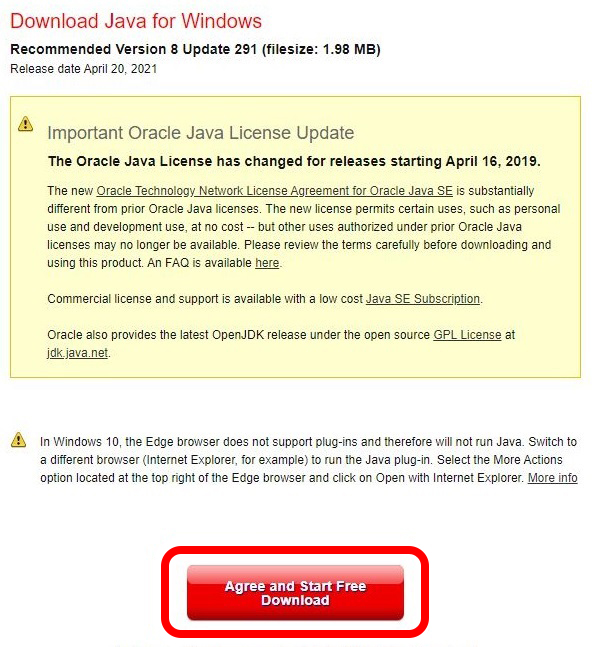

- #JAVA RUNTIME ENVIRONMENT HOW TO#
- #JAVA RUNTIME ENVIRONMENT INSTALL#
- #JAVA RUNTIME ENVIRONMENT SOFTWARE#
- #JAVA RUNTIME ENVIRONMENT CODE#

#JAVA RUNTIME ENVIRONMENT INSTALL#
If the new Java Plug-In is not present on a particular system, then browser-specific mechanisms are needed to download and install it in order to support per-applet JRE version selection. Support for the java_version parameter is provided by the new Java Plug-In.
#JAVA RUNTIME ENVIRONMENT HOW TO#
The examples below illustrate how to use the java_version parameter. Note that in order to run on top of the latest available JRE on the system, no java_version parameter is necessary this is the default behavior. Consult the Using APPLET, OBJECT and EMBED tags section of the Java Plug-In Guide for details. Other alternate or shorthand forms of syntax are not guaranteed to work across browsers. The java_version parameter should be specified as a name/value pair in an embedded tag when used with the and tags, and via java_version= when used with the tag. In particular, selection of a particular JRE version, one in a particular family, or one in a given family or any later family are all supported. The value of this parameter is a version string following the rules in the JNLP specification, Chapter 4 and Appendix A.

The java_version parameter has been added to the, and tags to provide browser-independent JRE version selection. More details of the version selection behavior are provided in the following section. In order to provide the most complete information, the new version selection mechanism, as well as how it interoperates with the previously available browser-specific mechanisms, are detailed here. The new Deployment Toolkit can be used to specify this parameter in a browser-independent fashion, without writing HTML manually.
#JAVA RUNTIME ENVIRONMENT CODE#
When an earlier version of the JRE is selected via the new plug-in, the new plug-in's code is actually run on top of the earlier JRE version, again in similar fashion to how the Java Web Start launcher works. This capability is similar to that provided by Java Web Start, which allows selection of which version of the JRE is used to launch the application. More precisely, it supports running an individual applet on top of a particular version of the JRE without affecting which JRE version is used to run any other applet in the same browser session. Not only does the new Java Plug-In support multiple simultaneously attached JVM instances, it supports multiple JRE versions. Note that the new plug-in does not necessarily create a new JVM instance for each applet like the classic plug-in, the default behavior of the new plug-in is to run all applets in the same JVM instance. The new plug-in now supports having more than one JVM instance simultaneously attached to the web browser. This architecture bears similarities to the "classic" Java Plug-In on the Solaris and Linux platforms, but the communications channel and relationship between the web browser and the attached JVM instance have been redesigned. Rather than executing applets in a Java™ virtual machine (JVM) instance which is embedded in the web browser's process, the JVM instance which executes the applet is now a separate process from the web browser. The new plug-in offers a substantially redesigned architecture. The new Java Plug-In is being introduced simultaneously for all of the platforms on which Oracle directly supports Java (Solaris, Linux, and Microsoft Windows) and all supported browser families (the Mozilla Firefox family of browsers as well as Internet Explorer 6 and 7).
#JAVA RUNTIME ENVIRONMENT SOFTWARE#
is introducing a new implementation of the Java Plug-In, which is the piece of software which executes applets in the web browser. Differences in Behavior Compared to Previous Versions.The version and jpi-version Attributes in the Mozilla Browser Family.The Classid Attribute in Internet Explorer.


 0 kommentar(er)
0 kommentar(er)
